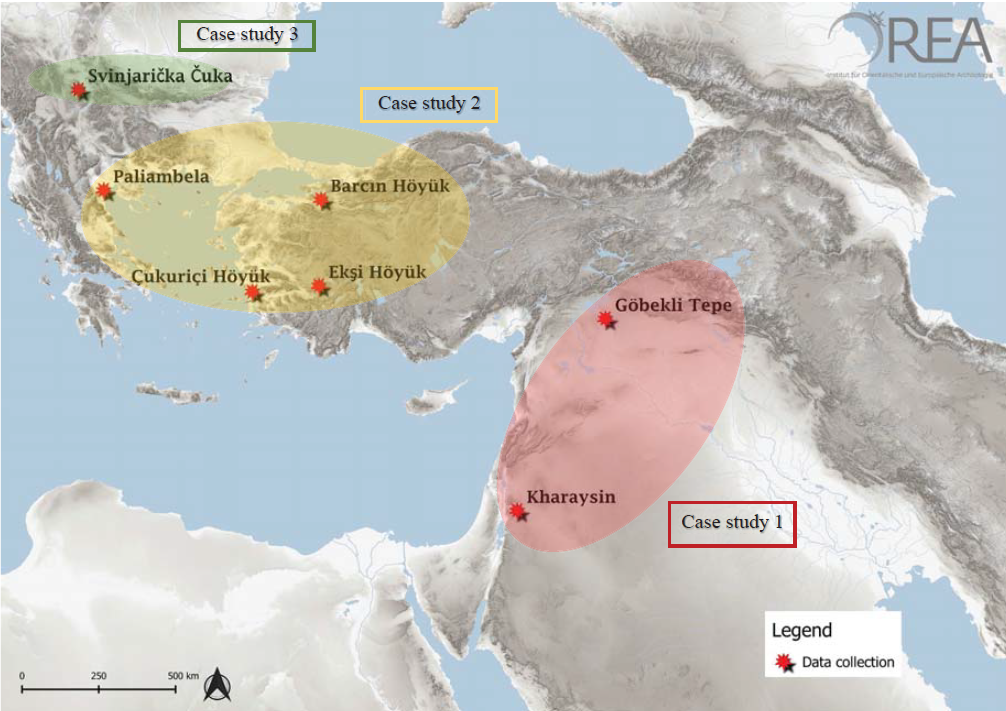ARROWFUNC – Revisiting the function of arrowheads in the context of first farming communities between the Near East and Southeast Europe
The transition from hunting and gathering to farming and herding stands as one of the major economic changes in the human past. The origins of the Neolithic in the Near East and its expansion into western Anatolia and the Aegean basin are equally crucial for understanding the emergence of first village systems in Europe. Recent studies on lithic tools demonstrated that important technical innovations (pressure blade making, plant harvesting techniques) moved westwards alongside the dispersal of farmers, and became the essential part of new toolkits used in a variety of domestic activities. In line with the onset of new tools, arrowheads, which traditionally reflect the lifestyle of mobile hunter-gatherers, continue to be produced during the Neolithic in this area, despite the progressive decrease of hunting for subsistence.
The ARROWFUNC project aims to investigate this paradox by carrying out a cross-disciplinary research involving archaeological and anthropological study of material culture, technological and microscopic analyses, and zooarchaelogical and bioarchaeological approaches. The ARROWFUNC project is designed to examine the role of chipped stone arrowheads by focusing on the function of tools in the Early Neolithic between the Near East and southeast Europe (10th-6th millennium BC), by integrating archaeological collections from the key sites in the study area, including two UNESCO World Heritage Sites (Çukuriçi Höyük and Göbekli Tepe). This project will, for the first time, use a single methodological approach to analyze datasets that are usually considered in isolation, and investigate crucial debates surrounding the emergence of food-producing economies, regional identities, cultural affinities and the role of symbolism in Neolithic societies. This project proposes a fine-scale multidisciplinary framework to investigate the role of chipped stone arrowheads through advanced use-wear analysis, review of patterns of animal use and in-depth study of the depositional context. In addition to its holistic agenda, systematically looking at the production, use and context, the ARROWFUNC project plans to implement technological, qualitative use-wear analyses and the cutting-edge quantitative methodological approach in the study of targeted assemblages to address the complexity of function and its relation to socio-economic and subsistence issues. The project rests on the hypothesis that arrowheads represent a “hunting heritage” in the first farming communities.
The ARROWFUNC postdoctoral project is awarded by the Austrian Science Fund (FWF) for the period between 2021-2024. In the first two years the project PI (Bogdana Milić) had research stays at the partner’s institutions at the Archaeology of Social Dynamics research group of the Spanish National Research Council in Barcelona, under the supervision of Juan J. Ibáñez, and further in Istanbul (Koc University & Netherlands Institute), and excavations and research centres across Turkey (Selçuk, Ankara, Mardin, Diyarbakır). A part of the outgoing abroad phase was hosted at CEPAM (Nice, France) under the supervision of Lionel Gourichon. The final phase of the project is hosted and the Austrian Archaeological Institute of the Austrian Academy of Sciences in Vienna, which regards incorporation of the project methodology and results of the studies between SW Asia and Central Balkans.

